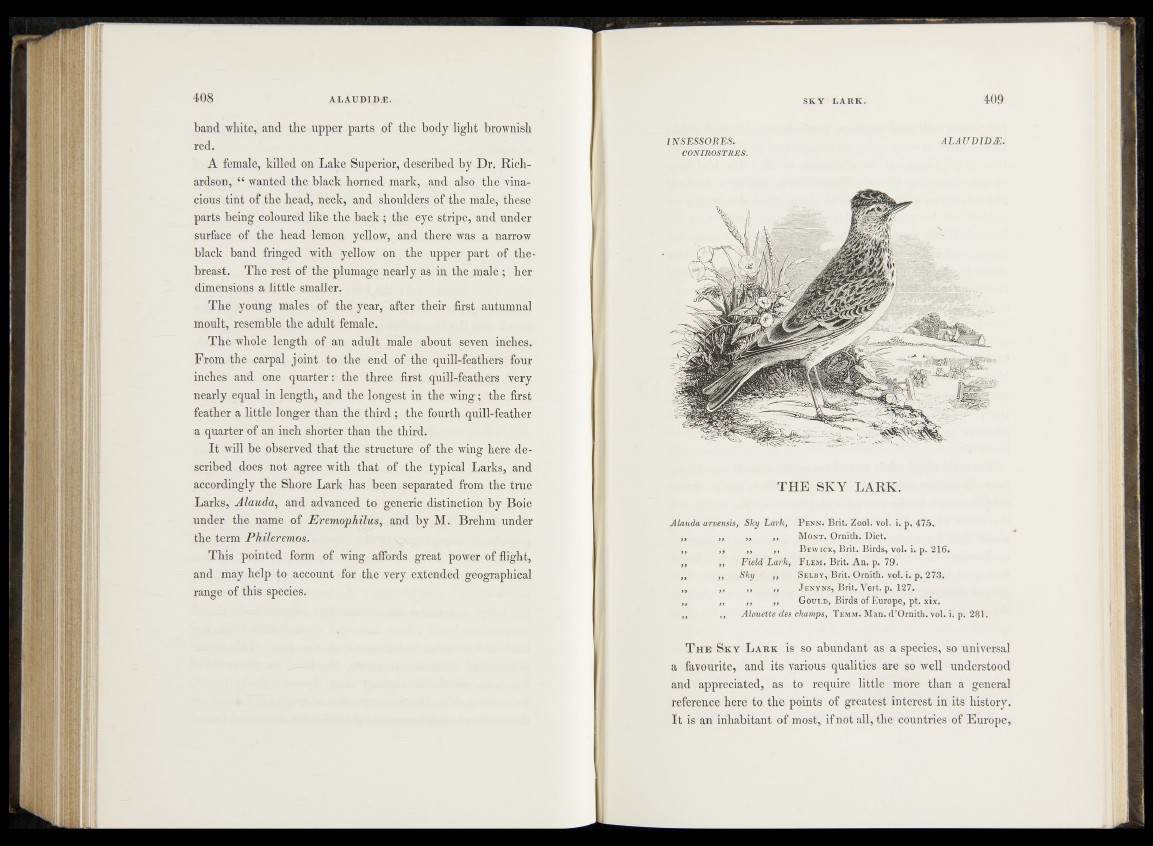
band white, and the upper parts of the body light brownish
red.
A female, killed on Lake Superior, described by Dr. Richardson,
e< wanted the black horned mark, and also the vina-
cious tint of the head, neck, and shoulders of the male, these
parts being coloured like the back ; the eye stripe, and under
surface of the head lemon yellow, and there was a narrow
black band fringed with yellow on the upper part of the-
breast. The rest of the plumage nearly as in the male ; her
dimensions a little smaller.
The young males of the year, after their first autumnal
moult, resemble the adult female.
The whole length of an adult male about seven inches.
From the carpal joint to the end of the quill-feathers four
inches and one quarter: the three first quill-feathers very
nearly equal in length, and the longest in the wing; the first
feather a little longer than the th ird ; the fourth quill-feather
a quarter of an inch shorter than the third.
I t will be observed that the structure of the wing here described
does not agree with that of the typical Larks, and
accordingly the Shore Lark has been separated from the true
Larks, Alauda, and advanced to generic distinction by Boie
under the name of Eremophilus, and by M. Brehm under
the term Phileremos.
This pointed form of wing affords great power of flight,
and may help to account for the very extended geographical
range of this species.
SK Y L A R K . 409
INSESSORES. ALAUDIDÆ.
CONIROSTRES.
TH E SKY LARK.
Alauda arvensis, Sky Lark, P enn. Brit. Zool. vol. i. p. 475.
,, „ ,, ,, M ont. Ornith. Diet.
, , , , , , , , B ewick, Brit. Birds, vol. i. p. 216.
,, ,, Field Lark, F lem. Brit. An. p. 79.
,, ,, Sky ,, Selby, Brit. Ornith. vol. i. p. 273.
„ ,, ,, ,, J enyns, Brit. Vert. p. 127.
,, ,, ,, ,, Gould, Birds of Europe, pt. xix.
,, ,, Alouette des champs, Temm. Man. d’Ornith. vol. i. p. 281.
T he Sky L ark is so abundant as a species, so universal
a favourite, and its various qualities are so well understood
and appreciated, as to require little more than a general
reference here to the points of greatest interest in its history.
I t is an inhabitant of most, if not all, the countries of Europe,